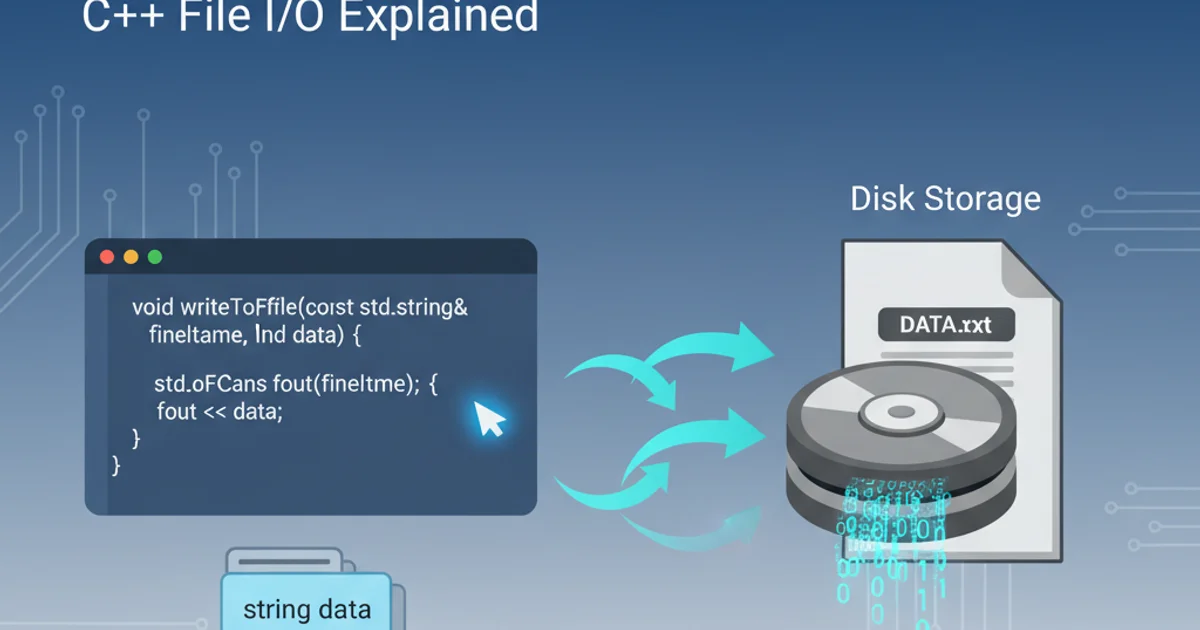Whats the difference between .ppk and .pem . Where .pem is stored in amazons ec2 cluster?
Categories:
.ppk vs .pem: Understanding SSH Key Formats for AWS EC2

Explore the differences between .ppk and .pem SSH key formats, their uses, and how .pem keys are managed within Amazon EC2 for secure instance access.
When working with secure shell (SSH) connections, especially in cloud environments like Amazon Web Services (AWS) EC2, you'll often encounter different key file formats. Two of the most common are .pem and .ppk. Understanding their distinctions and how they are used is crucial for managing secure access to your instances. This article will demystify these formats, explain their roles, and detail how .pem keys are utilized within the AWS EC2 ecosystem.
The Core Difference: OpenSSH vs. PuTTY
The fundamental difference between .pem and .ppk files lies in the software they are primarily designed for. .pem files are the standard format used by OpenSSH, the most common SSH client on Linux, macOS, and Windows Subsystem for Linux (WSL). On the other hand, .ppk files are proprietary to PuTTY, a popular SSH and Telnet client for Windows.
flowchart TD
A[SSH Key Formats] --> B[.pem (Privacy-Enhanced Mail)];
A --> C[.ppk (PuTTY Private Key)];
B --> D[OpenSSH (Linux, macOS, WSL)];
C --> E[PuTTY (Windows)];
D --> F[Standard for Cloud (e.g., AWS EC2)];
E --> G[Windows GUI Client];
F -- Requires conversion for --> C;
C -- Requires conversion for --> B;Relationship between .pem, .ppk, and their primary clients
.pem Files: The AWS EC2 Standard
The .pem (Privacy-Enhanced Mail) file format is a container format that can store various cryptographic objects, including public and private keys. In the context of SSH, a .pem file typically contains an RSA or DSA private key in a Base64 encoded ASCII format, often delimited by -----BEGIN RSA PRIVATE KEY----- and -----END RSA PRIVATE KEY----- headers. AWS EC2 exclusively uses .pem files as the default format for key pairs generated within its console or via its APIs. When you launch an EC2 instance, you associate it with a key pair, and AWS provides you with the private key in .pem format. This file is essential for authenticating to your EC2 instance using SSH.
ssh -i /path/to/your-key-pair.pem ec2-user@your-ec2-public-ip
Example of connecting to an EC2 instance using a .pem key
.ppk Files: PuTTY's Proprietary Format
PuTTY Private Key (.ppk) files are specific to the PuTTY suite of tools. If you're a Windows user and prefer to use PuTTY or its associated tools like PuTTYgen and Pageant, you'll need to convert your .pem file into a .ppk file. PuTTYgen is the utility used for this conversion. While .ppk files serve the same purpose as .pem files (holding the private key), their internal structure is different and not directly compatible with OpenSSH clients.
.pem or .ppk) secure and never share them. They are the sole means of authenticating to your EC2 instances.Where .pem Keys are Stored in AWS EC2
It's important to clarify that the .pem file you download from AWS EC2 is the private key component of an SSH key pair. The public key component is what AWS stores and associates with your EC2 instance. When you create a key pair in AWS, the public key is automatically uploaded to AWS and stored in a secure, managed service. This public key is then injected into the ~/.ssh/authorized_keys file on your EC2 instance when it's launched. The private key (.pem file) is what you, the user, keep on your local machine.
sequenceDiagram
participant User
participant AWS_Console_API as AWS Console/API
participant EC2_Instance as EC2 Instance
User->>AWS_Console_API: 1. Create Key Pair (e.g., 'my-key')
AWS_Console_API-->>User: 2. Download 'my-key.pem' (Private Key)
AWS_Console_API->>AWS_Console_API: 3. Store 'my-key.pub' (Public Key)
User->>AWS_Console_API: 4. Launch EC2 Instance with 'my-key'
AWS_Console_API->>EC2_Instance: 5. Inject 'my-key.pub' into ~/.ssh/authorized_keys
User->>EC2_Instance: 6. SSH using 'my-key.pem' (Local Private Key)
EC2_Instance->>EC2_Instance: 7. Authenticate with 'my-key.pub' (Stored Public Key)Flow of SSH Key Pair Management in AWS EC2
Therefore, the .pem file itself is not 'stored' within the EC2 cluster in the sense of being on the instance's file system or within an AWS managed storage service accessible to you after creation. Instead, the public key derived from that .pem file is stored by AWS and then placed on the instance. Your downloaded .pem file remains on your local machine, acting as your credential to prove your identity to the EC2 instance.
.pem private key, you will not be able to SSH into new instances launched with that key pair. For existing instances, you might be able to regain access through a recovery process, but it's complex. Always back up your .pem files securely.